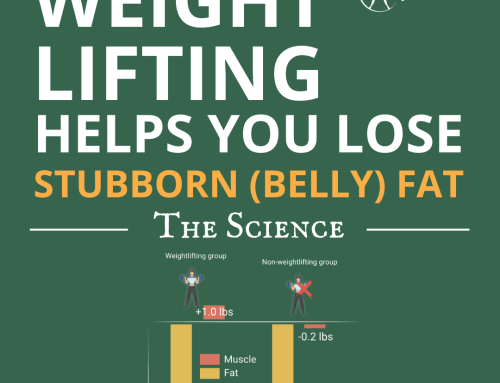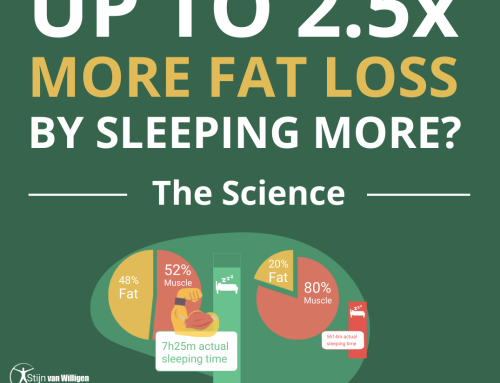1. Pasiakos et al. (2010) Acute energy deprivation affects skeletal muscle protein synthesis and associated intracellular signaling proteins in physically active adults
- Participants were 8 men (15% bodyfat) and 4 women (29% bodyfat), all physically active.
- For 10 days, men ate 2350 (-16.8% energy deficit, -450 kcal) and women 1650 (-24.2% energy deficit, -500 kcal) per day, compared to their 2800 and 2150 kcal energy expenditure.
- They did not weight train during the study and ate 1.5 g/kg protein per day.
- After these 10 days of dieting they achieved 1 kg weight loss on average.
- After an overnight fast, between 5:00 and 6:30 am in the morning, they used amino acid tracers to measure “muscle protein synthesis” (MPS by Fractional Synthetic Rate (FSR)), the main indicator of muscle growth, for 5 hours thereafter.
- There was a 19% reduction in this FSR (main muscle growth indicator) compared to eating at calorie maintenance.
2. Hector et al. (2018) Pronounced energy restriction with elevated protein intake results in no change in proteolysis and reductions in skeletal muscle protein synthesis that are mitigated by resistance exercise
- Used D2O method for integrated (area under the curve) MPS measurement, as well as Phenylalanine amino acid tracking for acute MPS.
- Participants were in a 40% energy deficit for 11 days.
- There was no significant change in Muscle Protein Breakdown (MPB), and therefore the authors concluded that a reduction in MPS is the main mechanism that underpins muscle loss during cutting.
- Limitation: participants were near obese, so may not be comparable to how lean people’s muscle responds to such a big energy deficit.
3. Phillips et al. (1997) Mixed muscle protein synthesis and breakdown after resistance exercise in humans
- Participants were 4 males and 4 females: untrained, young, and lean.
- 8 sets of leg extensions at 80% of their 1RM, either done in a concentric-only or eccentric-only fashion.
- The 2 different training types did not result in significantly different MPS or MPB.
- They used amino acid tracers to measure muscle growth (FSR; mixed muscle fractional synthetic rate).
- They performed measurements 3h, 24h, and 48h after the exercise session.
- At these 3 measurement times, MPS was 112%, 65% and 34% higher than at rest. For MPB this was 31%, 18% and 0%.
4. Greenhaff et al. (2008) Disassociation between the effects of amino acids and insulin on signaling, ubiquitin ligases, and protein turnover in human muscle
- The slightest amount of amino acids, combined with some insulin (i.e. eating any food at all) reduced MPB by 50%.
- Eating more did not further help.
Extra notes
- Unfortunately, I know of no studies that compared muscle growth in a participant group that was bulking with a group that was cutting.
- Note that in [1] MPS was measured in a fasted state, and in [2] MPS was measured in a fed state.
Strength of evidence explanation:





Leave A Comment